2024 Haru Basho spotlight: Breaking down Kotonowaka's solid, but not sensational, March
The soon to be Kotozakura scored double digit wins in March, but was on the outside looking in as Takerufuji and Onosato duelled for the yusho.
Note: This was going to be a pay-walled post. However, I received some good news while doing my final proofread. A contract I had been waiting on finally came through. I signed it as quick as possible and can now announce that I have joined the awesome crew over at MMA Mania. To celebrate my new gig this Kotonowaka spotlight will be free for everyone! The income from my new role at Mania will provide a nice cushion that allows me to continue dedicating time to Sumo Stomp! When I was laid off from BE I had a lot of new paid subscriptions here and that not only helped me out of a short term bind, but it also meant I could keep doing stuff here. That really meant a lot to me and it was a beautiful silver lining around a very dark cloud. I’m deeply thankful for everyone who has subscribed so far and I look forward to making more of the same content while also doing some experimenting. Now, back to your regularly scheduled programming…
After back-to-back jun-yusho across November and January Kotonowaka was promoted to ozeki for the March tournament. In his debut ozeki tournament the legacy rikishi was solid, earning double digit victories for the fourth time in his last five tournaments. However, despite being solid and locking in an impressive record, the debuting ozeki spent the entire basho chasing the eventual winner and watching from the sidelines as Takerufuji and Onosato dominated the storylines.
The 26-year-old Kotonowaka watched as the 25-year-old Takerufuji scooped up an Emperor’s Cup in his very first makuuchi tournament and the 23-year-old Onosato came runner-up in only his second makuuchi tournament (and only fifth ever senior tournament).
Why was Kotonowaka, a young veteran of 50 basho, unable to score a few extra wins and thus put himself in a position to challenge his slightly younger rivals? Well, that’s what we’re going to find out now.
During the March tournament I paid extra attention to Kotonowaka (since he won our reader vote). Below I have gifs and video of all of his bouts for us to chew over and try to figure out.
I like to write and analyze simultaneously when I make these spotlight posts. Because of that these posts have somewhat of a stream of consciousness quality, with me discovering something in real-time as I write. I hope you find that approach interesting and it invites you to also try and figure out what we’re looking at in these gifs along with me.
Anyways, let’s get into it.
Day 1 vs. Atamifuji
Kotonowaka got off to a great start in March with a very quick win over Atamifuji, someone he has beaten three times in a row now.
This win was scored a hatakikomi (slap down). In their previous two bouts, Kotonowaka won by katasukashi (under shoulder swing down) and hikiotoshi (hand pull down). Something I admire about Kotonowaka is how he so clearly game-plans for specific opponents. A lot of rikishi remind me of all the MMA fighters I have interviewed over the years who, when asked what their approach is for a given opponent, say something like “I’m not worried about what they do, I’m just going to do what I do best.”
Based on how obvious it is that Kotonowaka is targeting opponents’ weaknesses, I’m pretty confident that he’s someone who studies his rivals and likes to have a clear idea of how he can beat them when he squats down opposite them.
Against Atamifuji, Kotonowaka’s scouting report is that Atamifuji leans and pushes forwards and when he does, he can be driven down.
Below is their bout in January. You can see the key difference between this bout and the one from March is how tightly both men are clinched up.
Below is the replay from the March bout. I think Atamifuji may have learned a little lesson from January. He went at Kotonowaka with an idea to defend against a katasukashi, hence why his arms were tight to his body and he didn’t try to overhook Kotonowaka’s arm (which is what he needs for the katasukashi).
Kotonowaka looked like he was feeling for the underhook off the tachiai. You can see he faked contact with his right arm and looked to swim it underneath Atamifuji’s left. However, when he realized Atamifuji had closed that off, he decided to focus on pushing down Atamifuji’s head — utilizing his height advantage. That push down is complimented by a great hop backwards, timed perfectly with both the push and Atamifuji’s lunge forwards.
That quick win gave Kotonowaka a 1-0 start to the basho and it might have taught Atamifuji that next time he should both block the underhook and stay more upright when he tries to push against Kotonowaka.
Day 2 vs. Asanoyama
Kotonowaka’s first hiccup of the tournament came on Day 2 versus former ozeki Asanoyama. Asanoyama now holds a 3-0 record over Kotonowaka, but one of those bouts happened all the way back in 2016. Their other bout, last September, was an electrifying affair.
First, here’s what happened most recently:
And here is their previous bout from September:
I’m going to go back to recent bouts a lot in this piece, because I think we’re going to discover a lot of cool details by seeing how Kotonowaka changes his approach based on his past experiences with his opponents.
In the September bout, Kotonowaka got the jump on Asanoyama and tried to get him out with thrusting. He wasn’t able to get the job done, though. Asanoyama was able to deflect the thrusts and stay in along the boundary before grabbing Kotonowaka’s belt and throwing him down.
Kotonowaka learned then that Asanoyama is tough to push out and very dangerous when he gets your belt.
In March, it looks like Kotonowaka decided not to waste effort on thrusting. Instead he braced for impact off the tachiai. He did this because he was hoping that, during that resulting bounce, he could to find an opening for a similar attack like we just saw him execute on Atamifuji.
It looks like he got caught in two minds, though, looking at Asanoyama’s arms and head and not being sure which to focus on. Asanoyama also made it very hard for Kotonowaka to target his shoulder, by pushing Kotonowaka’s arms away from him. In staying straight up, while looking for a high grab, he also conceded a lot of ground. By the time Kotonowaka was able to attempt a finisher (another hatakikomi) he already had a foot out.
The loss put him at 1-1.
Day 3 vs. Nishikigi
On Day 3 Kotonowaka used the same approach for a third time in a row, this time against Nishikigi. Off the tachiai he again braced for impact and immediately went to work on a high grab. Unlike on the past two days, though, Kotonowaka was able to secure an underhook, the first part of process needed for the katasukashi. Atamifuji had kept his arm pinned too tightly for this and Asanoyama had pushed Kotonowaka’s arms away to prevent this. He got the underhook on Nishikigi, though. But Nishikigi defended smartly and took the katasukashi off the table.
Nishikigi prevented Kotonowaka from being able to load up on his right shoulder, and bring him down, by latching onto Kotonowaka’s belt with his right hand. This gave him something to hold onto, and right himself, should Kotonowaka had hopped to the side and tried to get both hands on his left shoulder.
Kotonowaka responded intelligently to this counter. Instead of digging in and trying to pull the move off from a bad position, he adjusted. He completely gave up on the idea of a katasukashi by threading his left arm inside of Nishikigi’s and going for the belt himself. And why not, he’s 6-2 versus Nishikigi and has a couple of yorikiri wins over him. He didn’t get a grip on the belt, but he succeeded in breaking Nishikigi’s grip. Nishikigi then stepped back to create space, probably not liking that Kotonowaka was close to having double underhooks. And once that happened, Kotonowaka was able to use his speed to chase down Nishikigi and thrust him out.
A great response, and some slick in-fight decision making, gets Kotonowaka to 2-1.
Day 4 vs. Takanosho
On Day 4 Kotonowaka was given another opponent he’s performed well against in the past. The win he got here gave him a 5-2 record over Takanosho. And the kotenage (arm lock throw) he scored is his fourth throw against him.
This is one of the longest bouts of Kotonowaka’s tournament. I think longer bouts favor him because he has the wits to figure out new strategies during those lulls and he’s also got a lot of weight he can lean into opponents to sap their strength while he thinks.
In this bout Kotonowaka looked for the belt off the tachiai, perhaps hoping to set up an uwatenage (over arm throw). Takanosho, who has been sent for a ride few times from that position, pulled away though. Kotonowaka chased him and tried to thrust him out along the border. But Takanosho did well in staying in bounds and getting himself back into a clinch.
Once they were clinched up, Kotonowaka snapped on an armlock, dedicating both arms to the effort, thus signaling what he wanted to do to win the fight. Instead of working to yank his right arm out of danger, Takanosho decided to grab Kotonowaka’s belt with his trapped right hand. Grabbing the opposite side of Kotonowaka’s belt with his free hand would have been a good defense. But grabbing with his trapped hand, just meant he kept himself in this position longer and gave Kotonowaka more time to tighten the hold.
Takanosho tried to advance forwards from this position, triggering the throw attempt from Kotonowaka. Takanosho defended the initial attempt by grapevining Kotonowaka’s leg. And then he did well to circle away from the boundary as Kotonowaka tried to push him back. However, all of these defensive actions did nothing to get his arm out from Kotonowaka’s grip. With that grip Kotonowaka was able to keep Takanosho in place and make it very hard for Takanosho to threaten him. Takanosho felt his best bet was to surge forwards again, which again triggered a throw attempt. Takanosho again grapevined the leg, but this time Kotonowaka kept twisting Takanosho forwards and, when he was able to unhook their legs, complete the kotenage.
Kotonowaka gets to 3-1.
Day 5 vs. Ura
On Day 5 Kotonowaka met Ura. These two have a pretty even record against each other and Ura often represents a stiff challenge for Kotonowaka. Kotonowaka usually gets the best of Ura in a straight-up pushing match, which means Ura often needs to be more creative to get him down. Including this win below, Ura’s three victories over Kotonowaka are two katasukashi and a tottari (arm bar throw).
Kotonowaka knows Ura is good at these moves and that he needs to make sure he does not give up the top of his shoulder to him. In the tachiai here Kotonowaka tries to get a hold of the front of Ura’s belt right away. In January he was able to run Ura out of the ring thanks to a strong grip on the belt.
However, Ura refused to give him that grip. He batted away Kotonowaka’s arms and then established an underhook on the right side. Kotonowaka should have recognized this as a katasukashi set-up. Instead, I think he considered going for an armlock on that side. Before Kotonowaka could clamp down on the arm, though, Ura used his great quickness to get out of there and land the katasukashi.
That mistake put Kotonowaka back to 3-2, two behind the leading Takerufuji and Onosato at this point in the tournament.
Day 6 vs. Abi
Kotonowaka might have been relieved to see himself drawn against Abi on Day 6. Kotonowaka likes to plan for his opponents and Abi may be the easiest rikishi to plan for in the division. That doesn’t mean he’s easy to beat, though. Abi beats plenty of guys with his machine-gun arm attack. However, it’s not a great move against something as big and sturdy as Kotonowaka (something proved by Kotonowaka’s 8-2 record against him).
Kotonowaka’s wins over Abi are pretty basic. He stands up to the pressure and then shoves Abi’s arms to the side, hoping to make him miss. A lot of the times Kotonowaka has been able to get to Abi’s side like this and then push him out. This time Abi did the hard work for him.
The bruising, but routine, win over Abi got Kotonowaka to 4-2.
Day 7 vs. Meisei
On Day 7, Kotonowaka kept with the same approach he had used for most of this basho; brace and lock. And against Meisei, he found a great target for this approach.
Meisei predictably charged hard into Kotonowaka off the tachiai. He then slapped an inside grip on the left side of Kotonowaka’s belt. The ozeki must have thought Christmas had come early. We’ve watched as he has worked to get this position in his other bouts, but here Meisei just gave him the perfect set up for his kotenage.
In the replay you can see how Kotonowaka doesn’t need a lot of force to complete this move. Having Meisei’s arm trapped, and in danger of injury, means Kotonowaka can gentle guide Meisei around the ring, since Meisei is looking to move in a way that spares his joints more so than move in a way to escape. With Meisei focused on damage limitation, Kotonowaka was able to find the angle he needed to encourage Meisei to flip over in exchange for a release of that arm.
This gift-wrapped throw moved Kotonowaka to 5-2.
Day 8 vs. Wakamotoharu
Day 8 saw a bit of a departure from how Kotonowaka had started most his bouts. In this one, against Wakamotoharu, he came out swinging.
I think this thrust-heavy opening is evidence of Kotonowaka having a lot of respect for Wakamotoharu’s yotsu-sumo. Wakamotoharu has had success in the past by grapping Kotonowaka’s belt and forcing him out. A year prior to their most recent match, Wakamotoharu stole a win off Kotonowaka with an utchari (backward pivot throw), which came from a set of strong belt grabs. Check that out below:
So I think we can count this thrusting attack on Day 8 as another example of Kotonowaka learning from experience and avoiding his opponent’s strengths. Most of Wakamotoharu’s wins come via yorikiri. By thrusting at his chest, and pushing back his arms, Kotonowaka was able to keep Wakamotoharu’s hands away from his waist and move him back until he ran out of room.
That got him to 6-2 on the basho.
Day 9 vs. Daieisho
This is a bit of an odd bout. You can see below that Kotonowaka probed for Daieisho’s left arm off the tachiai, perhaps looking for either a katasukashi or a kotenage (both of which he had used to great effect already this month). But I don’t think he expected Daieisho to be pushed back so far (and so easily). After Daieisho slid all the way to the boundary he presented Kotonowaka with an easy push out.
I think this might be down to Daieisho carrying an injury. He had a stinker of a tournament in March (6-9) and looked unable to drive forwards with the same power we are used to seeing from him.
Kotonowaka moved to 7-2 thanks to that, lurking behind leaders Takerufuji, Onosato and Hoshoryu.
Day 10 vs. Oho
Kotonowaka went with thrusting again on Day 10, scoring a yorikiri on Oho (and giving himself a 3-0 record against him). The last time these two met (in January) they had a long thrusting duel where Kotonowaka was able to get Oho to the straw but couldn't quite get him out. In that bout he pushed out Oho after Oho missed on a thrust coming forwards.
Kotonowaka exploited Oho’s forward momentum again in this bout. See below how he focused on defense and then pivoted to offence at the perfect time.
Kotonowaka used great strength and timing to brush aside that opening thrust from Oho, who is a slow mover and sometimes very slow to recover. Once Oho was past him, Kotonowaka went for a push out but quickly recognized he’s not going to get it. So he switched tactics and let Oho come off the straw, only so he could shepherd him out and then close the deal on the opposite side of the ring.
I really like this bout because it shows off some great reaction speed and decision making from Kotonowaka. And, again, I believe this shows Kotonowaka working off his prior experience, baiting Oho into reaching so he can push him while he is on the move instead of after he has dug in.
That put Kotonowaka at 8-2.
Day 11 vs. Takerufuji
Day 11 gives us what I think was the most fascinating bout of Kotonowaka’s basho. Since Kotonowaka is a fighter who uses his past experiences against opponents to calculate a game-plan, it’s very interesting to see him take on an opponent for the very first time. With no prior competitive experience against Takerufuji, Kotonowaka likely based his strategy around both what he’s seen from Takerufuji in competition (and during exhibition tours) and what he believes his own strengths are.
Off the tachiai Kotonowaka attempted to establish an inside grip with his left hand, which is how he scored his kotenage win on Meisei. However, Takerufuji refused to let him have that. He pulled back violently to make sure Kotonowaka could not get a hold of him. I think the distance Takerufuji created really surprised Kotonowaka. He stumbles forwards with his head down and before he could steady himself, Takerufuji pounced on him and drove him back with the powerful charge that won him his historic yusho.
Kotonowaka tried for a last ditch uwatenage (over arm throw), but Takerufuji kept square to him and kept pushing, sending Kotonowaka into the lap of the shimpan.
That dropped Kotonowaka to 8-3 and pushed Takerufuji to 11-0. At this point it felt as though Kotonowaka’s chance of competing for the yusho had gone.
Day 12 vs. Onosato
On Day 12, Kotonowaka met the other young gun who was tearing up the dohyo. This was his second ever meeting with Onosato, with Kotonowaka winning their first bout in January. Here’s that January bout:
And now here’s the March bout:
These bouts have similar beginnings but wildly different endings. Kotonowaka won the first bout by being able to get a good grip on the back of Onosato’s belt. The angle makes it hard to see, but he’s got a firm grip back there and that is what he used to keep Onosato from moving forwards or out to the side.
In their Match bout, Kotonowaka looked for a similar position on the belt (it’s the same one he used to great effect on Oho a few days prior, too). However, he wasn’t able to lock it in and Onosato was able to surge forwards looking for the push out. Kotonowaka adjusted, though, and went back to one of his other trusted positions, the armlock. Onosato had been exposed a few times when he charges at someone who is good at throws (see Hoshoryu and Terunofuji), so it’s no surprise that Onosato either didn’t recognize the kotenage was coming or he simply didn’t have the tools to prevent it (yet!).
The replay below shows Onosato might have slipped towards the end here. But I credit Kotonowaka with making him slip, as he wrenched him forwards. Note Kotonowaka’s nimble little hop on one foot, too, to give him a better angle to torque on Onosato’s shoulder.
That’s 9-3 for Kotonowaka and a big dent to the yusho hopes of Onosato, too.
Day 13 vs. Takakeisho
On Day 13 Kotonowaka went for the rear belt grip again, this time on Takakeisho. As you’d expect by now, the reason he did this is because it worked the last time they faced each other. Last November, Kotonowaka was able to run Takakeisho out with an okuridashi (rear push out) after grabbing the back of the belt and pulling Takakeisho past him.
Here’s that November bout:
Fast forward to March. See below how Takakeisho learned from that past experience. Kotonowaka tried the exact move on Takakeisho here and Takakeisho was able to recognize that and prevent himself from being pulled over to the straw.
Once that move stalled out Kotonowaka had to think of something else. It looked like he tried to get a second hand on Takakeisho’s belt with hopes of getting him out with a yorikiri. Takakeisho is strong as an ox, though, and he was able to put Kotonowaka off balance when he twisted away, searching for a shitatenage (under arm throw). Kotonowaka blocked that effort and seemed to consider trying to respond with an uwatenage. But by then he was already too close to the straw and Takakeisho was closing in on him.
That gave Kotonowaka a 9-4 record and mathematically eliminated him from yusho contention.
Day 14 vs. Hoshoryu
On Day 14 we had a duel between two guys who are going to command their own Don Don rival video someday. Kotonowaka and Hoshoryu are both going to be at the top of this game for a long time yet, so we’re going to see plenty of battles between them.
They’ve already faced each other 17 times, the first two of those back in the makushita in 2019. After this win by Kotonowaka in March, his record with the Rising Dragon stands at 7-10. Interestingly, Kotonowaka has won the last four bouts versus Hoshoryu, after losing the previous 10 bouts. During that losing streak Kotonowaka was thrown seven times. So it’s pretty obvious that Kotonowaka’s game-plan for Hoshoryu is to avoid the throw at all costs. That should be everyone’s game-plan against the Mongolian, but only a few are skilled enough to see that through. Kotonowaka is one of them.
In March Hoshoryu went hunting for the throw straight off of the tachiai, getting a hand on Kotonowaka’s belt and then switching his hips for an uwatenage. Kotonowaka blocked the throw and then took advantage of Hoshoryu tripping over one of his legs. As Hoshoryu was stumbling Kotonowaka put a strong hand on him to secure the win.
In the replay below you can see that Kotonowaka was playing for underhooks off the tachiai. I think he might have been hoping to lock Hoshoryu up, chest-to-chest, and keep Hoshoryu’s arms high enough that Hoshoryu couldn’t reach his belt. When he saw what Hoshoryu was doing though, he defended well by leaning back and keeping his trapped arm high. He also showed great footwork, moving forwards, with Hoshoryu, while navigating around Hoshoryu’s thigh and hip so as not to get slung over them.
This ugly win (you usually have to win ugly against Hoshoryu) gave Kotonowaka a 10-4 record and his last win of the basho. This win also eliminated Hoshoryu from title contention.
Day 15 vs. Kirishima
There really is no hiding when you’re an ozeki. On the last day of the tournament Kotonowaka met fellow ozeki Kirishima. Even though Kirishima had a historically bad tournament (for him), he’s still one of the greatest rikishi on the planet and someone who gives Kotonowaka a ton of trouble. Kotonowaka is 4-11 against Kirishima and, due to the nature of those losses, it’s very hard for Kotonowaka to put those negative experiences to good use.
Kotonowaka lost a ton of matches to Hoshoryu via throws, so he’s gotten better at defending against them (as we saw above). But Kirishima has beaten him with throws, push outs and force outs. This is what makes Kirishima so great. He’s so well rounded and capable of beating anyone with either pushing/thrusting or belt-work.
The diversity and creativity of Kirishima’s game is very hard for Kotonowaka to plan for.
In their bout Kotonowaka tried a little bit of everything.
Off the tachiai he did the ‘brace and lock’ combo, letting Kirishima hit him in the chest and then hoping to grab an arm or shoulder (like he did against Nishikigi and Meisei). That didn’t work, so then he pivoted to a thrusting attack (like we saw against Wakamotoharu). And then he tried to catch Kirishima with an uwatenage close to the boundary (like he tried against Takerufuji and Takakeisho). Kirishima defended against all of those positions. His block on the uwatenage was especially good.
In the video go to the 58 second mark to see how Kirishima puts a hand on Kotonowaka’s thigh and then pushed it out the way, removing the fulcrum Kotonowaka was relying on to hoist Kirishima over with. After all those moves failed for Kotonowaka he looked a little paralyzed while he tried to figure something else out. Kirishima is most dangerous in these situations, though. He loves getting people to stall and then race with them to find a solution. He almost always wins in these situations, his sumo/judo brain doing laps around most opponents.
Kirishima used this time to threaten with throws, while also working to get grips on both sides of Kotonowaka’s belt. Once he got the right grip he showed incredible strength to sling Kotonowaka over and out.
It’s hard to fault Kotonowaka much in this situation, since Kirishima is such an incredible talent. And on this last day of the tournament, it seemed as though Kirishima had shaken off whatever funk was affecting him over the previous 14 days and was able to put in a performance where he looked back to his best.
That loss gave Kotonowaka a 10-5 record in his debut ozeki tournament. Not bad at all. Especially given how both Kirishima and Hoshoryu struggled in their debut ozeki tournaments.
Conclusion
Kotonowaka had a good tournament in March. Starting his ozeki career off with double digits is a great achievement and I’m pretty optimistic of his chances of not only staying ozeki for a long time, but also of potentially securing the ultimate rank of yokozuna. He has incredible size, elite technique and fantastic decision-making. And he has youth and fitness on his side.
His 10-5 here will look nice in the record books. In March his performance did go under the radar, but only because we had a once in a lifetime occurance of Takerufuji winning the yusho, while being chased by Onosato. It’s hard to not focus on those storylines and thus forget the achievements of Kotonowaka, Hoshoryu and a few others who really showed up in March.
But the mandate of this spotlight piece is to nit-pick, so if we want to know why Kotonowaka had to settle for ‘solid display’ and not ‘title winning or challenging effort’, we need to look at his losses.
The Asanoyama, Takakeisho, Ura and Kirishima losses all featured rikishi who Kotonowaka has struggled against in the past (12-24 against that cohort). Takerufuji was a new threat to him and someone who had destiny on his side.
I’ve praised Kotonowaka throughout this piece on his ability to learn from his experiences and strategize for specific opponents. That approach helped him win the majority of his bouts in March. However, his game-planning might have proven a double-edged sword against the elite opponents he lost to that month.
In the Takakeisho bout Kotonowaka tried to fight the exact same bout he won the last time they fought. However, Takakeisho refused to fall for the same trick twice. Against Ura he also went for a tried and tested technique, a specific belt grab, but in doing so left himself open to one of Ura’s go-to attacks. These are the two bouts I think Kotonowaka would like to have back.
Against Asanoyama and Kirishima he didn’t do much wrong, he was just out worked and out muscled by two guys who are excellent in areas he is merely very good at. And I think the shock factor he suffered against Takerufuji can be forgiven (he wasn’t the only one to be surprised by the rookie).
So, ‘Why was Kotonowaka, a young veteran of 50 basho, unable to score a few extra wins and thus put himself in a position to challenge his slightly younger rivals?’
Well… he fought really good opponents. He went at all of them with a solid game-plan, but a few were able to beat those strategies with their own creativity or brute power. Those losses may have cost Kotonowaka a chance to get his first Emperor’s Cup this March. But they will serve as valuable additions to the memory bank of the ozeki soon to be known as Kotozakura Masahiro. And I’m confident that we will see him improve in those specific match-ups because of those losses.



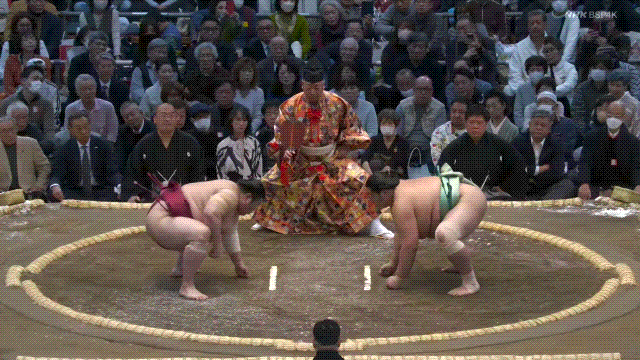


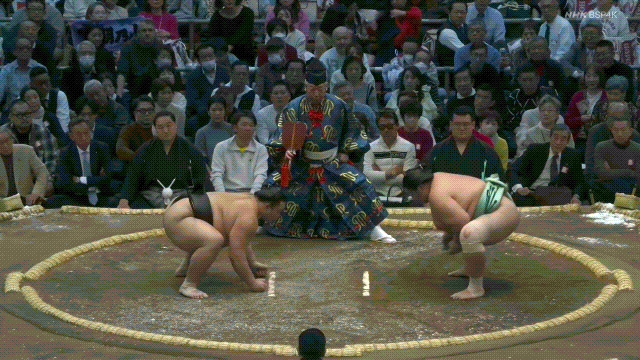

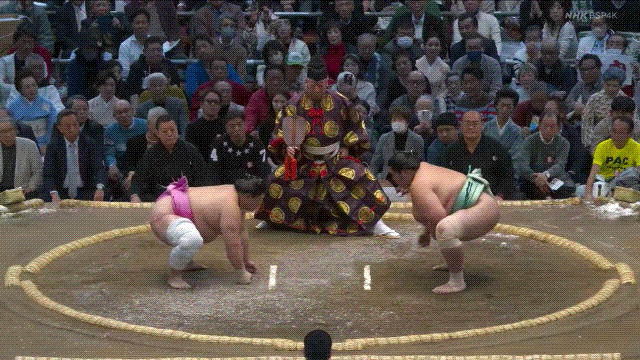

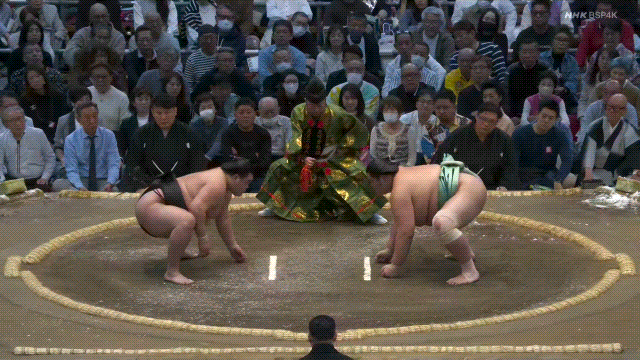


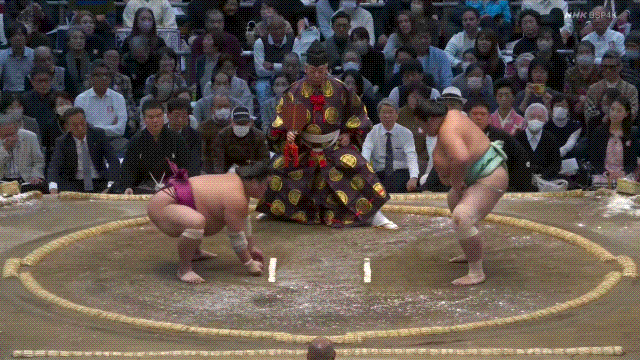
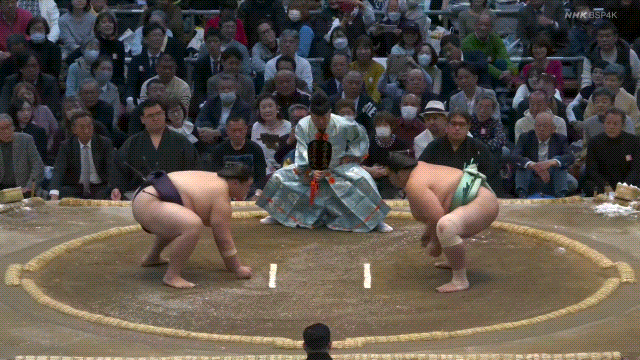
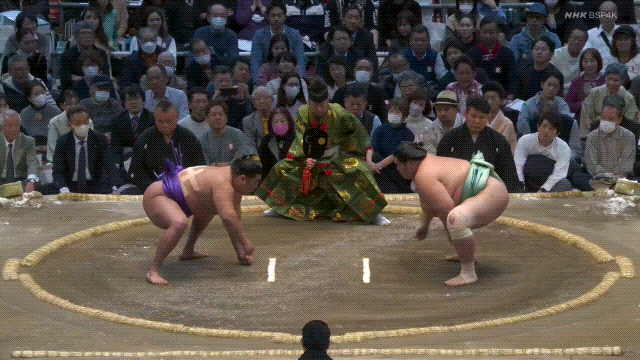
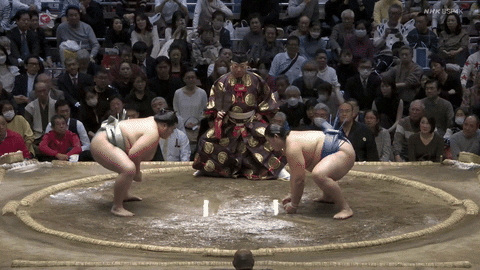

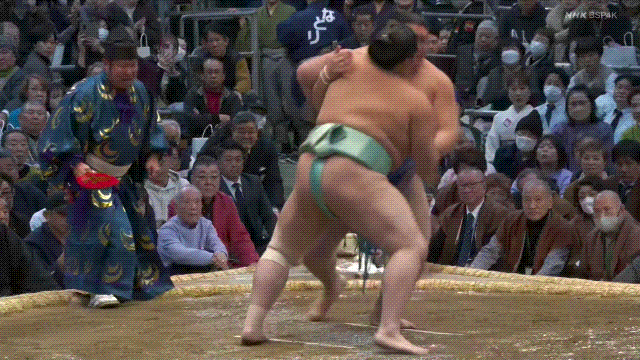
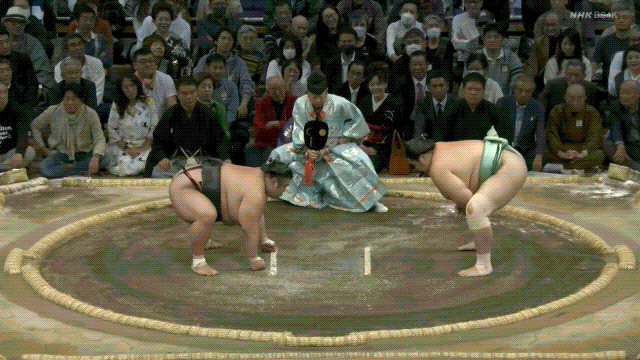

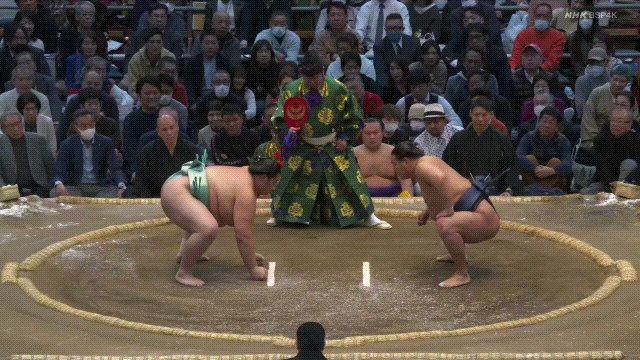

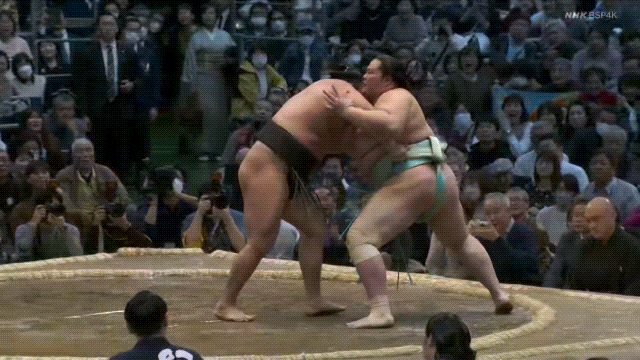
With all these talented, young, new ozekis at the top and these stunningly good rookies working their way up, I think we are in for a great sumo year -- probably several!
Thank you Tim, that was a good read. Helps fill the Sumo void.